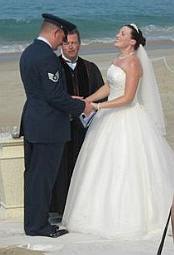Feelings and Faces
Donald Nathanson, M.D. has written much on the ideas of Sylvan Tomkins -- the latter’s work being a bit abstruse for most of us to digest easily.
Tomkins believed that there were nine - and only nine - universal emotional affects. These affects, i.e., feeling experiences, were innately tied to the nerves in the face. Thus a baby could not help but show it if he were in the midst of experiencing one of these affects.
Here are the nine:
- Interest —> Excitement
- Enjoyment—> Joy
- Surprise —> Startle
- Fear —> Terror
- Distress—> Anguish
- Anger —> Rage
- Dissmell —> Disgust
- Shame —> Humiliation
One important thing to notice is that each is on a spectrum. We spot something novel and become interested. As we move toward it and investigate further, we may become excited about our find. You see this phenomenon in small children all the time; the whole world is new and exciting.
In an optimal environment, the expression of interest, followed by excitement at learning something new actually increases the complexity of the neural network in children. In other words, it increases their intelligence. On the other hand, where curiosity is suppressed, boredom and depression often set in and the developing brain is also stifled. The eyes of such children often seem to be flat or empty.
Tomkins proposed that these nine affects were the sum total…we might experience variations on their themes as we matured, and we might learn (we’d better learn!) to mask our expressions in polite society, but we would continue to experience these affects throughout our lives.
Each affect has its own unique facial expression and body language. In shame, for instance, the neck droops and the eyes turn away from whatever caused the feeling state of shame. Intensifying, the state can move on to humiliation and cause the child to withdraw - physically if he can, or emotionally if he cannot. Everyone develops coping skills to deal with shame, though these skills are limited. Nathanson diagrammed them out in a compass of shame.
[Scroll halfway down the page to see the diagram]
Nathanson illustrates his book with pictures of babies in the midst of these feeling states. The “disgust” face is amusing to see — and moving, too. It makes you realize how absolutely similar we human beings are when we start out.
 All of this is a preface to explain why this picture fascinates me. Here is a “baby face” that has disintegrated into pure rage. John McCain has an anger problem, hmm? Or at least it appears he has difficulty modulating this affect under duress.
All of this is a preface to explain why this picture fascinates me. Here is a “baby face” that has disintegrated into pure rage. John McCain has an anger problem, hmm? Or at least it appears he has difficulty modulating this affect under duress.I’d like to get eight more politician’s pictures illustrating the remaining affects. If I can, I’ll try to find images from both sides of the aisle. No need to pick on either group since - despite what some say - we’re all human. Somehow, though, I don’t think anything I find will be as absolutely perfect an example as this one is.
Maybe it's his chubby-cheeked baby face that makes this example so fascinating?

 I didn’t know the Danes celebrated ‘sankte Hans’ particularly. They probably don’t anymore; no doubt it’s an anachronism, just as is naming hypericum perforatum St. John’s Wort.
I didn’t know the Danes celebrated ‘sankte Hans’ particularly. They probably don’t anymore; no doubt it’s an anachronism, just as is naming hypericum perforatum St. John’s Wort. You Tube has disabled the embed for Nat King Cole’s video, and the sound doesn’t meet today’s standards, but
You Tube has disabled the embed for Nat King Cole’s video, and the sound doesn’t meet today’s standards, but 



